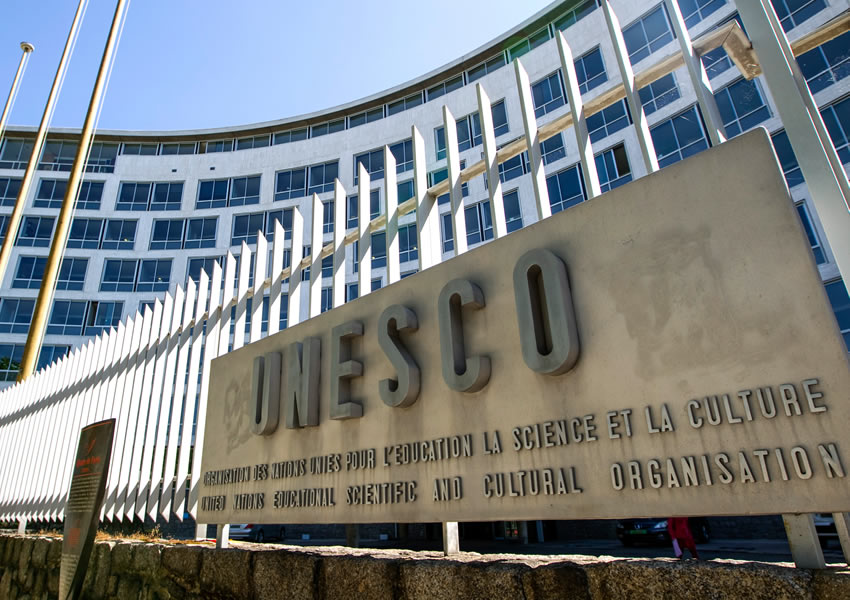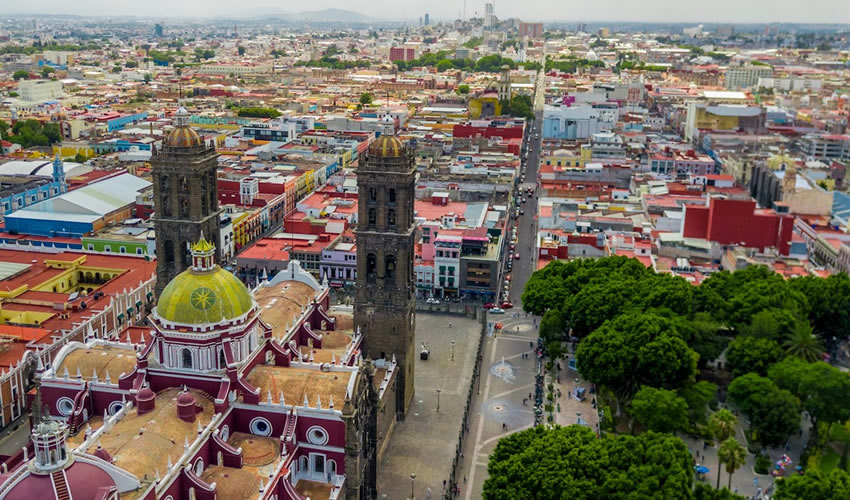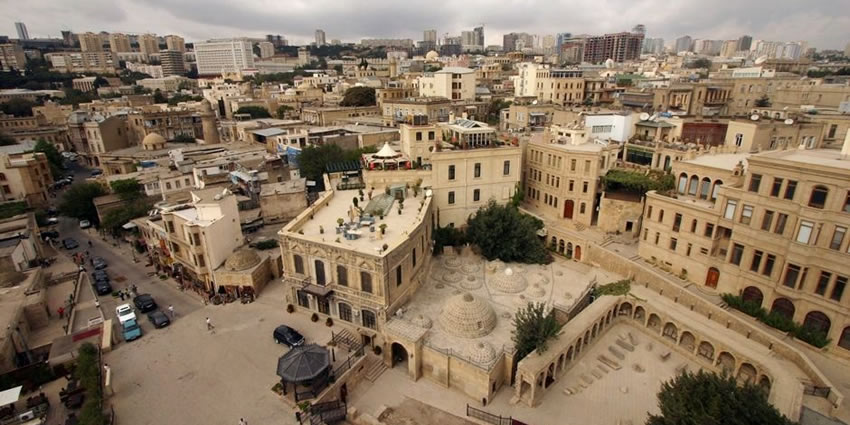We have all heard of the UNESCO World Heritage List and we can even name at least a couple of famous sights from it. But how is the List formed and why do some objects get into it, while others do not? Who even came up with the idea of cataloging world values and what is the use of it?
What is a UNESCO World Heritage Site?
UNESCO (United Nations Educational, Scientific and Cultural Organization) is a special unit of the United Nations for education, science, and culture. UNESCO leads projects in 5 main categories:
- education
- natural sciences
- social and human sciences
- culture
- communication and information
The UNESCO World Heritage belongs to the sphere of culture. And world heritage is natural or man-made objects, over which UNESCO takes patronage and does everything to preserve and make them popular.
In 2019, there were 1,121 properties on the World Heritage List: 869 cultural, 213 naturals, and 39 mixed. These objects are located in 167 member countries of the UNESCO Convention.
When was the World Heritage List created?
The origins of the World Heritage Convention lie in the events of 1959. The main impetus for the adoption of the Convention was the construction of the Aswan Dam in the United Arab Republic (now Egypt and Syria). Then the governments of the UAR and Sudan turned to UNESCO for help in saving the ancient monuments of Egyptian Nubia.
The problem was that the valuables were in danger of being flooded by the lake, which was formed after the construction of the dam in Aswan. UNESCO, in turn, appealed to the international community for help – and as a result, the largest archaeological rescue operation in history was carried out.
In 1960, UNESCO, in collaboration with the governments of the UAR and Sudan, carried out large-scale archaeological research, during which many very important objects were saved – from the city of the Old Kingdom and ancient temples of Nubia to household items and other artifacts.
Although this mission became iconic, it was only the beginning – the preservation and relocation of the temples of Nubia turned out to be a much larger task. The Executive Committee of UNESCO, as part of the International Campaign to Save the Monuments of Nubia, held large-scale fundraising, and the world turned out to be so generous that almost all the significant temples and shrines of Nubia were saved.
After all this rescue operation, it became clear that it was time to create a centralized mechanism for the preservation and protection of cultural heritage. American officials Joseph Fisher and Russell Train in 1965 voiced their recommendation for the creation of such a body at the Conference on International Cooperation, which was held at the White House.
Although the recommendation was not widely adopted in the United States, by 1966 similar initiatives were proposed by the International Union for Conservation of Nature and the International Council on Monuments and Sites. But so far it hasn’t come to fruition.
In November 1966, a catastrophic flood hit Venice, and the attention of the whole world was again focused on the threat to the common heritage. UNESCO and the Italian government have begun to develop a multi-year plan for the conservation and restoration of cultural monuments.
However, it was already clear to everyone that the response of the world community to such events was far from ideal. At an international conference in Amsterdam in April 1967, Train spoke again and spoke about his concept of an international organization that would unite under a single program the protection of the natural and cultural heritage of mankind.
Support for the World Heritage Fund only grew stronger, and in June 1972 delegates to the UN Stockholm Conference on the Environment announced that they were ready to fully support this program.
On November 16, 1972, UNESCO adopted the Convention Concerning the Protection of the World Cultural and Natural Heritage. By that time, the organization had already embarked on another ambitious project, this time to preserve the huge monument of Borobudur in Indonesia.
The World Heritage Convention entered into force on December 17, 1975, and in 1978 the World Heritage List was finally created.
In the first year of the list, twelve sites were included, including Aachen Cathedral (Germany), the Galapagos Islands (Ecuador), L’Anse aux Meadows (Canada), the Lalibela rock churches (Ethiopia), the Royal Salt Mines in Wieliczka, and Bochnia (Poland) and Yellowstone National Park (United States).
The list grew rapidly in the following decades, and in the 21st century, it already included more than 1,000 objects from 165 countries.
What kind of objects are included in the List?
To be included in the list, a property must be recognized “as being of Outstanding Global Value”. This means that it is so exceptional in cultural or natural terms that its significance even transcends national borders, and the object is valuable to all mankind.
The Convention divides such heritage into three broad categories: cultural, natural, and mixed.
Cultural heritage is:
- Monuments: works of architecture, monumental sculpture, and painting, archaeological sites, inscriptions, caves, etc.
- Ensembles: groups of buildings and architectural complexes.
- Places of interest: works of man or joint creations of man and nature, archaeological sites.
Natural heritage is even more difficult to define, but according to the text of the Convention it is:
- Monuments are created by nature itself.
- Geological and physiographic formations and strictly limited ranges of endangered species of animals and plants are important for science and need to be preserved.
- Natural landmarks or severely restricted natural areas that may be useful for science or are simply uniquely beautiful.
- And the so-called cultural landscapes are considered to be mixed objects – such as “joint creations of man and nature”.
The Historic Monuments Zone of Puebla is an almost 7 km polygon that is considered the origin and historic center of Puebla de Zaragoza, the capital of Puebla State.
And by what criteria are objects selected?
The Committee recognizes a property of outstanding global value only if it meets one or more of the approved criteria. Previously, this list was divided into 6 cultural and 4 natural criteria, but now they have been combined to make it easier to identify mixed objects.
In the formal language of the Convention, the object must:
- To be a masterpiece of human creative genius.
- Reflect on the impact that the property has had on the development of architecture or technology, monumental art, urban planning, or landscape planning.
- Be unique, or at least testify to some important cultural tradition or civilization that still exists or has already disappeared.
- To be an outstanding example of a type of building, architectural or technological ensemble, or landscape that shows an important stage in the development of human history.
- To be an outstanding example that is characteristic of some local culture.
- Be directly or indirectly associated with events or traditions, with ideas or beliefs, with works of literature and art that are of great global importance.
- Include the greatest natural phenomena or places of incredible beauty and aesthetic value.
- To be a model that reflects the main stages of the history of the Earth, including traces of ancient life, geological processes, etc.
- Be an example of important ecological and biological processes of evolution and development of different ecosystems, plants, and animals.
- Include natural areas that are very important for the conservation of biological diversity.
Another important point is that for all objects that claim to be on the list, the criterion of integrity is important. That is, the object must not be globally and irreparably damaged. For example, in an old church there cannot be double-glazed windows, and on the facade of a unique building – air conditioners.
Old City or Inner City is the historical core of Baku, the capital of Azerbaijan.
What are the benefits of World Heritage status?
The main purpose of the World Heritage List is to make known unique properties, as well as to protect them and help in restoration. Here are the benefits of being a World Heritage Site (or at least that’s how UNESCO records it):
- Helps to maintain the integrity of attractions. Of course, first of all, each state itself is obliged to preserve its heritage, but this is not always possible due to financial and cultural circumstances or is not a priority at all. Then UNESCO can finance and help control procedures for the preservation and restoration of heritage.
- Increases the prestige of the territories where the object is located and makes known countries that are not the most noticeable on the world stage.
- It helps to attract tourists to a particular place, and in the case of natural heritage, to develop alternative types of tourism, for example, ecological.
- Allows you to set financial priorities in support of cultural and natural heritage sites that come from the World Heritage Fund and from the state treasury. By the way, becoming a member of the Convention, the country undertakes to invest in its facilities.
- The object is constantly monitored and controlled by the state of its preservation.
- Last but not least, the inclusion of sites on the World Heritage List stimulates the local economy through tourism.
Who makes the decision to add a property to the List?
The most important structural part, but at the same time the most formal, is the General Assembly of the States Parties to the World Heritage Convention. It is convened during the sessions of the General Conference of UNESCO.
But the decision itself is made by the World Heritage Committee. It is the main body that regulates compliance with the provisions of the Convention. This committee consists of 21 members and meets at least once a year (June/July). The members of the Committee are elected for a term of six years.
The World Heritage Committee is assisted by a Secretariat appointed by the Director-General of UNESCO. Currently, the function of the Secretariat is performed by the World Heritage Center, founded in 1992 specifically for this purpose.
The Secretariat cooperates with the states that are members of the Convention, as well as with the Advisory Bodies. He also convenes the Committee and the General Assembly, handles paperwork with lists, and maintains official correspondence.
The Committee is also assisted by Advisory Bodies that deal with documentation, assess objects, deal with nature protection, and so on.
There are three such bodies: ICCROM – International Center for the Study, Preservation and Restoration of Cultural Property; ICOMOS – International Council for Monuments and Sites and IUCN – International Union for Conservation of Nature.
In 2010 UNESCO declared Mexican cuisine as an Intangible Cultural Heritage of Humanity.
What is the procedure for getting a property on the World Heritage List?
The inclusion of a property on the UNESCO World Heritage List is a long and complex process. 2.5 years is the minimum time required to comply with all the requirements and procedures of the World Heritage Committee.
It all starts with the country’s accession to the Convention and the ratification of all special documents. Then experts in the field of culture and nature protection of this country form a preliminary list of objects.
The Tentative List is a fairly global list of properties within a country that it considers eligible for inscription on the World Heritage List. Therefore, states try to include in their Tentative Lists as many objects as possible with a margin for the future.
States submit their Tentative Lists to the Secretariat by 30 September at least one year prior to any nomination. It is advised to revise the lists every 10 years (which is why it is important for states to include as many objects as possible in these lists).
Preliminary listings are submitted in English or French in a standard format: property name, location, a short description, and value justification. Properly executed and signed original of the completed Tentative List, the state provides to the headquarters of the organization in Paris.
If there are no questions to the list, then it is registered with the Secretariat and transferred to the Advisory Body for review. By the way, the secretariat updates the data once a year – removes from the Tentative Lists the objects that have already been included in the World Heritage List, and those that were nominated, but were out of work. Lists can be viewed here.
It was all a general Preliminary list for 10 years ahead – and now the country must prepare a nomination already for selected objects. According to the rules, one state can nominate no more than two objects per year (which must have been included in the Tentative List). The nomination must be submitted by February 1 one year before the regular session of UNESCO.
Therefore, the minimum duration of consideration of the application is one and a half years. After receiving the full dossier, the Secretariat sends it to IUCN, which evaluates the natural heritage, and ICOMOS, which evaluates the cultural heritage. And a third body, the International Research Center for the Preservation and Restoration of Cultural Property (ICCROM), is already making recommendations to the Committee on these sites.
Once a property has been nominated and evaluated, the UNESCO World Heritage Committee makes the final decision at its annual session. Based on the results of the review by the experts, one of three decisions can be made:
- recommend a site for inscription on the World Heritage List
- send the dossier for revision if the state has provided incomplete information or additional data is needed
- refuse to be included in the List
If the experts of the Advisory Bodies of the World Heritage Committee recommend a property for inscription on the World Heritage List, the issue is submitted to the next session of the World Heritage Committee. When a decision is made at the session to give the object the status of a World Heritage Site, a long journey of the interaction of all instances begins in order to preserve this object.
If objects can be added to the list temporarily?
Yes, they can. This is usually done with objects that are currently in danger of extinction. This can be caused by armed conflicts and wars, natural disasters, pollution, poaching, and construction. Such objects will appear in the List until the situation around them improves.
In addition, the Convention seeks to protect facilities during hostilities. The 1954 Convention for the Protection of Cultural Property in the Event of Armed Conflict prohibits the deliberate destruction of cultural property in times of war. But, unfortunately, such malicious destruction is often the end in itself of the opposing forces.
During the Bosnian conflict (1992-1995), Bosnian Muslim cultural sites and historical monuments were deliberately destroyed. And in 2001, in Bamiyan, Afghanistan, the Taliban destroyed several massive Buddha statues as part of their campaign against non-Islamic artifacts. The Commission is also trying to fight against such precedents.
Can objects be excluded from the World Heritage List?
Yes. Unfortunately, sometimes it happens that the object is so worn out or rebuilt that the Commission has to remove it from the list. Climate change, urbanization, and natural disasters constantly threaten World Heritage properties.
For example, sites such as the Arabian Antelope Reserve in Oman and the Dresden Elbe Valley in Germany have been removed from the list. And all because of the construction that began within the protected areas.
The official reasons for exclusion are as follows:
- The condition of the site has deteriorated so much that it has lost the characteristics that made it a unique heritage.
- The state did not take the necessary measures and did not eliminate the problems within the recommended time frame.
- The decision of the Committee on such an issue must be supported by 2/3 of the present members of the Committee with the right to vote. The Committee cannot decide to delist the property without consulting on the matter.
The exclusion of an object from the list does not mean that saving the value is abandoned. But the main responsibility for the preservation of the sights in such cases lies with the state itself, and not the world community.









